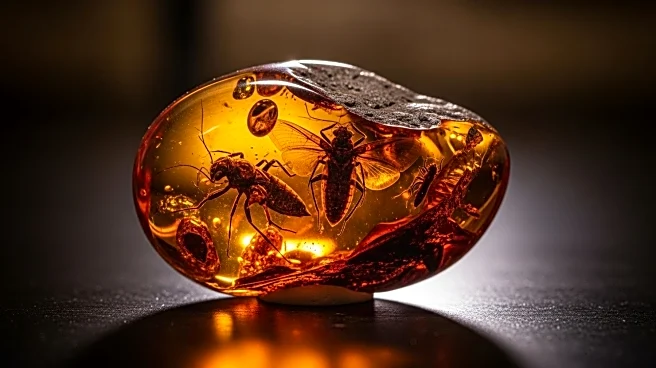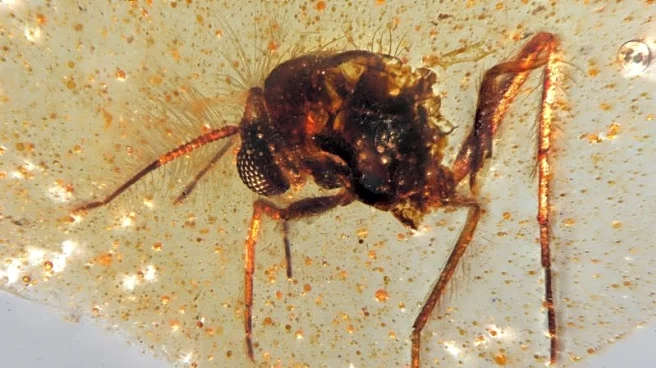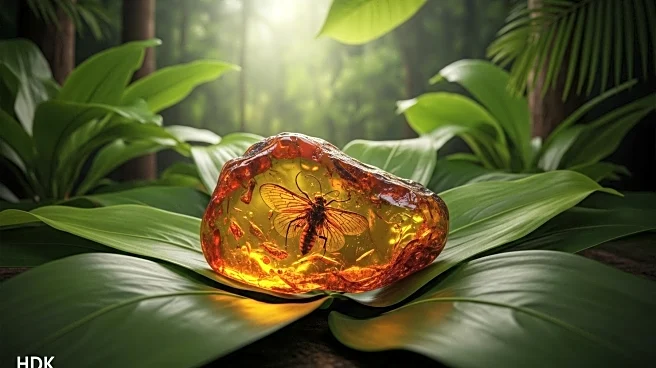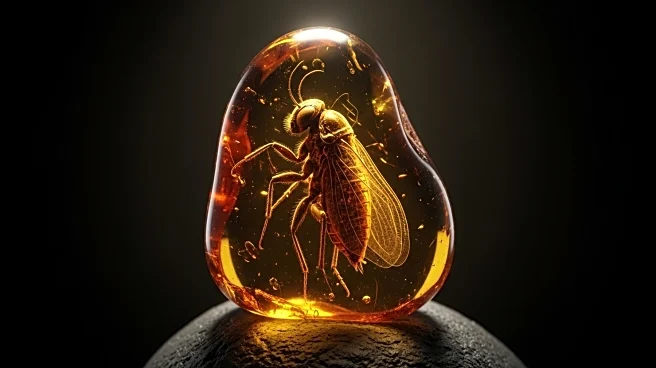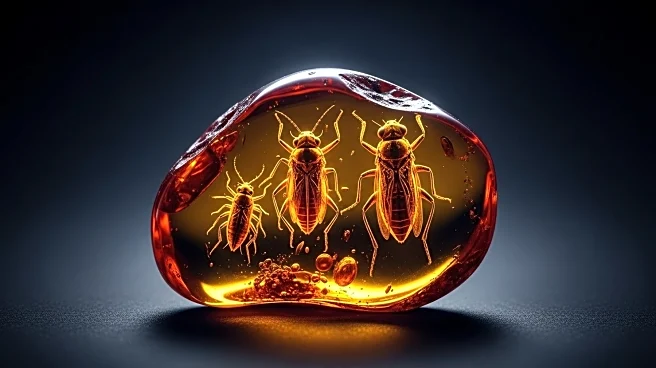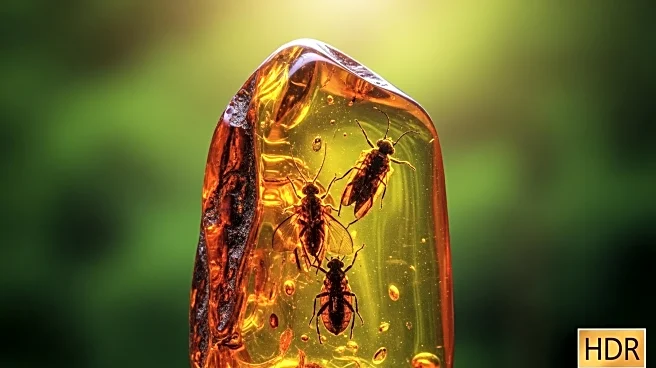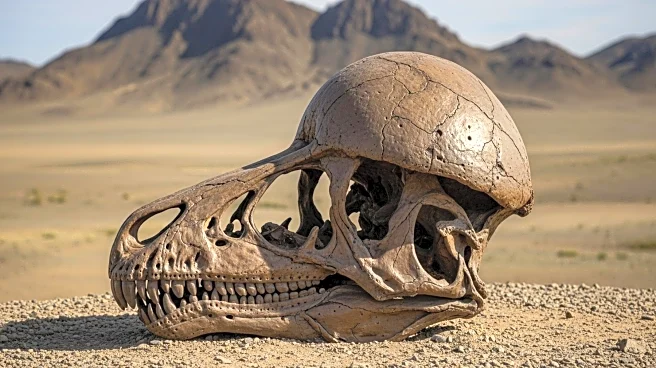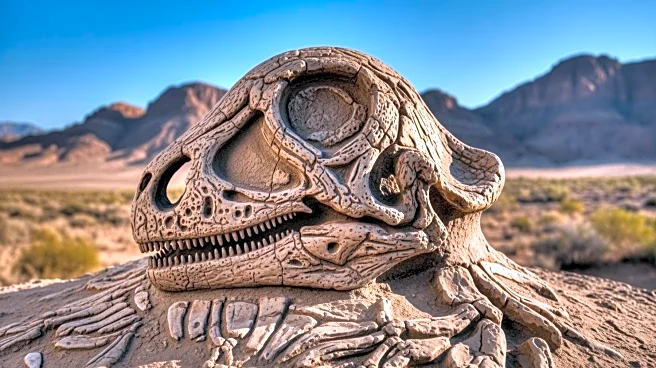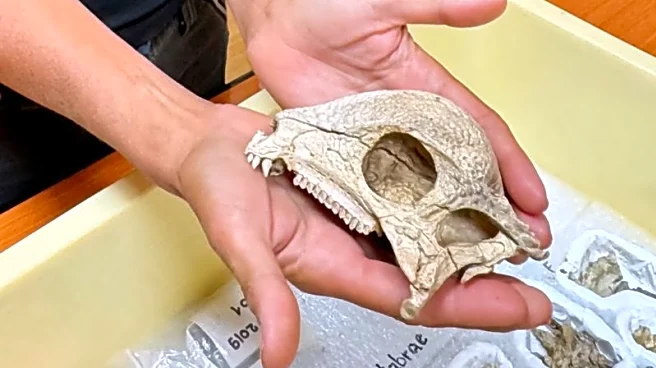What's Happening?
Scientists have uncovered a significant amber deposit in South America, containing fossilized insects and other preserved creatures. This discovery, detailed in a study published in Communications & Earth Environment, marks the first time such fossils have been found in South America. The amber samples, sourced from Ecuador's Genoveva quarry, offer a glimpse into ancient ecosystems from over 100 million years ago. Led by paleobiologist Xavier Delclòs from the University of Barcelona, the research team used a multidisciplinary approach to analyze the fossils, revealing the existence of a vibrant tropical rainforest during the Cretaceous period. The amber deposit is the largest of its kind found in the Southern Hemisphere, surpassing even the richest deposits in the Northern Hemisphere. The study identified 21 bio-inclusions, providing insights into the diverse life forms that existed during the time of the dinosaurs.
Why It's Important?
This discovery is significant as it opens a new window into the prehistoric ecosystems of South America, offering a rare opportunity to study creatures that are typically too small and delicate to fossilize. The findings contribute to our understanding of the biodiversity and environmental conditions during the Cretaceous period. The preserved insects and plants provide valuable information about the evolution of tropical rainforests and the ecological dynamics of the time. This research could lead to further discoveries in the region, enhancing our knowledge of ancient life and the geological history of South America.
What's Next?
The research team plans to continue exploring the region for more undiscovered amber deposits. By identifying and studying these deposits, scientists aim to reconstruct the ecosystem of the Cretaceous rainforest with unprecedented accuracy. This ongoing research will help unravel the origins and evolution of these ancient ecosystems, providing insights into the environmental changes that occurred at the equator during the Cretaceous period.

